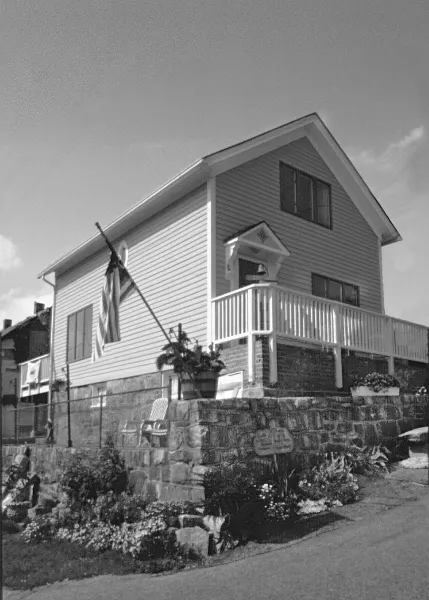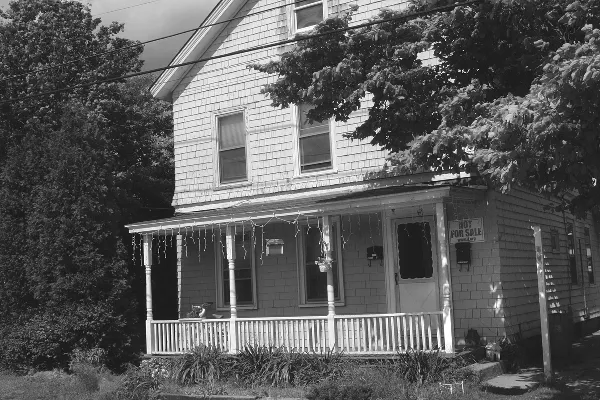
eBook - ePub
The Grasping Hand
"Kelo v. City of New London" and the Limits of Eminent Domain
- English
- ePUB (mobile friendly)
- Available on iOS & Android
eBook - ePub
About this book
In 2005, the Supreme Court ruled that the city of New London, Connecticut, could condemn fifteen residential properties in order to transfer them to a new private owner. Although the Fifth Amendment only permits the taking of private property for "public use," the Court ruled that the transfer of condemned land to private parties for "economic development" is permitted by the Constitution—even if the government cannot prove that the expected development will ever actually happen. The Court's decision in Kelo v. City of New London empowered the grasping hand of the state at the expense of the invisible hand of the market.
In this detailed study of one of the most controversial Supreme Court cases in modern times, Ilya Somin argues that Kelo was a grave error. Economic development and "blight" condemnations are unconstitutional under both originalist and most "living constitution" theories of legal interpretation. They also victimize the poor and the politically weak for the benefit of powerful interest groups and often destroy more economic value than they create. Kelo itself exemplifies these patterns. The residents targeted for condemnation lacked the influence needed to combat the formidable government and corporate interests arrayed against them. Moreover, the city's poorly conceived development plan ultimately failed: the condemned land lies empty to this day, occupied only by feral cats. The Supreme Court's unpopular ruling triggered an unprecedented political reaction, with forty-five states passing new laws intended to limit the use of eminent domain. But many of the new laws impose few or no genuine constraints on takings. The Kelo backlash led to significant progress, but not nearly as much as it may have seemed.
Despite its outcome, the closely divided 5-4 ruling shattered what many believed to be a consensus that virtually any condemnation qualifies as a public use under the Fifth Amendment. It also showed that there is widespread public opposition to eminent domain abuse. With controversy over takings sure to continue, The Grasping Hand offers the first book-length analysis of Kelo by a legal scholar, alongside a broader history of the dispute over public use and eminent domain and an evaluation of options for reform.
In this detailed study of one of the most controversial Supreme Court cases in modern times, Ilya Somin argues that Kelo was a grave error. Economic development and "blight" condemnations are unconstitutional under both originalist and most "living constitution" theories of legal interpretation. They also victimize the poor and the politically weak for the benefit of powerful interest groups and often destroy more economic value than they create. Kelo itself exemplifies these patterns. The residents targeted for condemnation lacked the influence needed to combat the formidable government and corporate interests arrayed against them. Moreover, the city's poorly conceived development plan ultimately failed: the condemned land lies empty to this day, occupied only by feral cats. The Supreme Court's unpopular ruling triggered an unprecedented political reaction, with forty-five states passing new laws intended to limit the use of eminent domain. But many of the new laws impose few or no genuine constraints on takings. The Kelo backlash led to significant progress, but not nearly as much as it may have seemed.
Despite its outcome, the closely divided 5-4 ruling shattered what many believed to be a consensus that virtually any condemnation qualifies as a public use under the Fifth Amendment. It also showed that there is widespread public opposition to eminent domain abuse. With controversy over takings sure to continue, The Grasping Hand offers the first book-length analysis of Kelo by a legal scholar, alongside a broader history of the dispute over public use and eminent domain and an evaluation of options for reform.
Frequently asked questions
Yes, you can cancel anytime from the Subscription tab in your account settings on the Perlego website. Your subscription will stay active until the end of your current billing period. Learn how to cancel your subscription.
No, books cannot be downloaded as external files, such as PDFs, for use outside of Perlego. However, you can download books within the Perlego app for offline reading on mobile or tablet. Learn more here.
Perlego offers two plans: Essential and Complete
- Essential is ideal for learners and professionals who enjoy exploring a wide range of subjects. Access the Essential Library with 800,000+ trusted titles and best-sellers across business, personal growth, and the humanities. Includes unlimited reading time and Standard Read Aloud voice.
- Complete: Perfect for advanced learners and researchers needing full, unrestricted access. Unlock 1.4M+ books across hundreds of subjects, including academic and specialized titles. The Complete Plan also includes advanced features like Premium Read Aloud and Research Assistant.
We are an online textbook subscription service, where you can get access to an entire online library for less than the price of a single book per month. With over 1 million books across 1000+ topics, we’ve got you covered! Learn more here.
Look out for the read-aloud symbol on your next book to see if you can listen to it. The read-aloud tool reads text aloud for you, highlighting the text as it is being read. You can pause it, speed it up and slow it down. Learn more here.
Yes! You can use the Perlego app on both iOS or Android devices to read anytime, anywhere — even offline. Perfect for commutes or when you’re on the go.
Please note we cannot support devices running on iOS 13 and Android 7 or earlier. Learn more about using the app.
Please note we cannot support devices running on iOS 13 and Android 7 or earlier. Learn more about using the app.
Yes, you can access The Grasping Hand by Ilya Somin in PDF and/or ePUB format, as well as other popular books in Law & Law Theory & Practice. We have over one million books available in our catalogue for you to explore.
Information
Chapter One
The Trouble in Fort Trumbull
The case that led to one of the most controversial decisions in modern Supreme Court history arose from unlikely origins in the little-known Fort Trumbull neighborhood of New London, Connecticut. It began with a small group of property owners who decided to resist the condemnation of their homes and other properties as part of a development plan intended to promote economic growth. Under normal circumstances, their case might never have gotten to court at all, as those targeted by eminent domain might not have had the time, energy, and resources needed to fight a prolonged legal battle. If it nonetheless had resulted in litigation, it could easily have ended at the state level in a decision that would have attracted little attention beyond Connecticut.
That the case became nationally famous was due to the dogged perseverance of the property owners whose land was threatened, the intervention of a major public interest law firm, and what many considered to be the surprising willingness of the Supreme Court to reopen an issue that expert opinion believed to be long settled: the power of the government to condemn private property for purposes of transferring it to other private owners. The seemingly local conflict that began in Fort Trumbull would ultimately trouble the conscience of an entire nation.
The history of the Fort Trumbull takings has already been effectively recounted in an excellent book by journalist Jeff Benedict.1 But Benedict’s main interest was in telling the story on the ground rather than exploring the constitutional and policy questions raised by the case. This chapter builds on his work, emphasizing those points that are most relevant to the broader issues that were eventually implicated by the Supreme Court’s decision.
Bulldozing a Path to Prosperity
The Fort Trumbull peninsula of New London, Connecticut had once been a moderately prosperous area. But the area’s economy was heavily dependent on the Naval Undersea Warfare Center located on the peninsula. It began to fall on relatively hard times in the 1990s around the time the center was closed as a result of post–Cold War defense cuts in 1995.2 Both area residents and city officials hoped to revitalize the region.
Despite the difficult economic conditions, some residents—including those who later played a major role in the Kelo case—believed that Fort Trumbull could recover and that it remained an attractive place to live and do business. Richard Beyer, who had grown up in New London, bought two small properties in Fort Trumbull in 1994, in which he and a business partner then invested a substantial amount of money to refurbish them for use as rental units.3 Although he acknowledges that economic conditions were difficult, Beyer believed that “without question,” the area had potential, so much, in his view, that “[y]ou really can’t lose” by investing there.4 Bill Von Winkle, another future Kelo plaintiff, had a similar story. He too had grown up in the area, and purchased several properties to refurbish as rental units in the 1990s, and also lived in one of them for a time.5 All told, he had owned property in the area for twenty-four years, and had a total of twelve apartment rental units, a commercial building, and a restaurant.6 At the time the Kelo condemnations began, he had recently spent some $300,000 on renovations.7
Susette Kelo, the EMT who became nationally famous because her name was listed first among the plaintiffs in the Supreme Court case, bought a home in Fort Trumbull in 1997.8 Although the house needed work, she fell in love with its impressive “water view” and what she called its “pizzazz.”9 This was the home that later became famous as the “little pink house” that became an iconic image of the struggle over the Fort Trumbull condemnations.10 Byron Athenian, owner of an autobody shop, had purchased a house in the same area in the late 1980s, where he lived with his family, including three children.11 He too liked the area and did not wish to move.

Figure 1.1 Susette Kelo’s famous “little pink house.” (Credit: Photo by Isaac Reese, 2004. Courtesy of Institute for Justice.)

Figure 1.2 The Cristofaro house. (Credit: Photo by Isaac Reese, 2004. Courtesy of Institute for Justice.)
Others had lived in Fort Trumbull for many years and had deep attachments to the community. Pasquale and Margherita Cristofaro, an elderly Italian American couple, had purchased a house in Fort Trumbull in 1972, after their previous residence had been condemned as part of an urban renewal taking.12 The Cristofaros, whose son Michael spoke for them in the Kelo litigation, were dead set against losing yet another house to eminent domain.13 By the late 1990s, the elder Cristofaros had moved to a different location, though they continued to own the house, which was now occupied by Michael’s elder brother and his family. He had recently retired after twenty-three years of service in the U.S. Air Force, and, according to his brother, “hope[d] that this was his last move and [he] would finally be able to settle down.”14
Matthew Dery came from a family that had owned property in Fort Trumbull since 1890.15 As of the late 1990s, they owned four houses in the area, one in which Dery lived with his family; two rental units; and one where Dery’s elderly parents, Charles and Wilhelmina, lived.16 Now in her eighties, Wilhelmina Dery had been born in that house in 1918, had never lived elsewhere, and ardently wished to continue living there for as many years as she had left.17
While the future Kelo plaintiffs liked living in the Fort Trumbull area and believed it was a good community, they also recognized that it had significant economic problems in the wake of the closure of the Naval Undersea Warfare Center. Richard Beyer, for example, told me that there was “a lot of negativity” in the air about the local economy in the 1990s and that “nothing was being done” to improve it.18 In addition to the area’s general economic doldrums, a nearby old city-owned sewage plant periodically emitted a terrible odor that annoyed many residents.19
New London city officials also recognized the economic difficulties the area faced. They hoped to revitalize it, as well as the city in general. In 1997, they reestablished the New London Development Corporation, which the Supreme Court would later describe as a “private nonprofit entity established . . . to assist the City in planning economic development.”20 The NLDC would ultimately produce the plan that resulted in the Fort Trumbull condemnations.
The NLDC was reestablished after a period of dormancy, under the leadership of a new president, Claire Gaudiani, an academic and president of Connecticut College with a long history of involvement in philanthropic and social justice causes.21 The NLDC’s resuscitation occurred in large part at the behest of the administration of Republican Connecticut Governor John Rowland. The Republican administration hoped to increase its political support by promoting economic development in overwhelmingly Democratic New London, but wanted to do it by working through an agency that was not controlled by the City’s Democratic elected government, which was generally hostile to the governor.22 The administration recruited Gaudiani to become the new president of the NLDC because of her prestige as the president of the area’s most prominent academic institution, her leadership skills, and her interest in community development.23
Although this was not the reason for her selection to lead the NLDC, Gaudiani was also the wife of Dr. David Burnett, a high-ranking employee of Pfizer, Inc., then the world’s largest pharmaceutical producer.24 Her knowledge of Pfizer led Gaudiani to recruit Pfizer executive George Milne to join the NLDC board, in part because she hoped that having a prominent corporate leader as a member would help attract investment to New London.25 But Gaudiani also hoped it would facilitate bringing Pfizer to the area, since she knew that the firm was in search of a location where it could build additional office space for a new headquarters, and New London fit the firm’s needs.26
In the fall of 1997, Gaudiani and Milne initiated discussions with Pfizer urging them to move to a former mill site location that had become available in New London.27 Pfizer began to show interest, and the firm and the NLDC engaged in further discussions with state officials, led by Peter Ellef, director of the state’s Department of Economic Cooperation and Development, and an important adviser to Governor Rowland.28 As a condition of moving to the New London site, Pfizer insisted that the city and state acquire ninety acres of property in Fort Trumbull—including the former naval research facility and some sixty acres of other property—in order to turn them into upscale housing, office, space, a conference center, a five-star hotel, and other facilities that would be useful to the corporation and its employees who would work in the area.29 While Pfizer would not be the new owner of the properties in question, it expected to benefit from their redevelopment.
Throughout the course of the Kelo litigation, Pfizer and NLDC representatives insisted that the firm was not involved in initiating the effort to condemn and redevelop the Fort Trumbull properties and that it had not made such redevelopment a condition of its decision to open up a new headquarters facility in New London.30 But evidence introduced at the trial, as well as additional documentation uncovered by an investigative reporter for the New London newspaper The Day in late 2005, several months after the Supreme Court’s Kelo decision was issued, shows that Pfizer “ha[d] been intimately involved in the project since its inception” and that the NLDC development plan and associated condemnations were “a condition of Pfizer’s move” to New London.31
Documents obtained by The Day through state Freedom of Information Act requests show that the NLDC condemnations were undertaken in large part as a result of extensive Pfizer lobbying of state and local officials.32 Pfizer representatives did indeed demand the redevelopment plan and its associated takings as a quid pro quo for its agreement to build a new headquarters in New London.33 In the fall of 1997, Pfizer had had a consulting firm prepare a design sketch for the proposed redevelopment of the Fort Trumbull area, which included proposals for the construction of a “high end residential district” and other facilities that would be of use to the firm and its employees.34 These ideas became the basis of an eventual agreement between Pfizer and state officials under which the firm agreed to establish a new headquarters in New London in exchange for some $118 million in state government subsidies and an additional $73 million allocated for the clearing and redevelopment of the Fort Trumbull area.35 State officials claimed that the combination of Pfizer’s move and the redevelopment project would generate some two thousand new jobs in New London.36 While much evidence of Pfizer’s involvement in the taking was alre...
Table of contents
- Cover
- Title Page
- Copyright Page
- Dedication
- Contents
- Preface to the Paperback Edition
- Acknowledgments
- Introduction
- CHAPTER 1. The Trouble in Fort Trumbull
- CHAPTER 2. From Public Use to Public Purpose
- CHAPTER 3. The Perils of Public Purpose
- CHAPTER 4. The Kelo Decision
- CHAPTER 5. The Political Backlash
- CHAPTER 6. Why the Backlash Often Fell Short
- CHAPTER 7. The Judicial Reaction
- CHAPTER 8. Should Blight and Economic Development Takings Be Reformed or Banned?
- Conclusion
- Appendix A
- Appendix B
- Notes
- Index